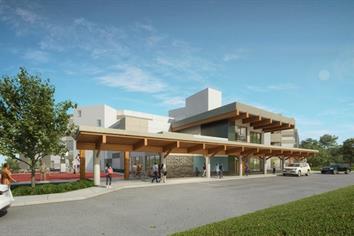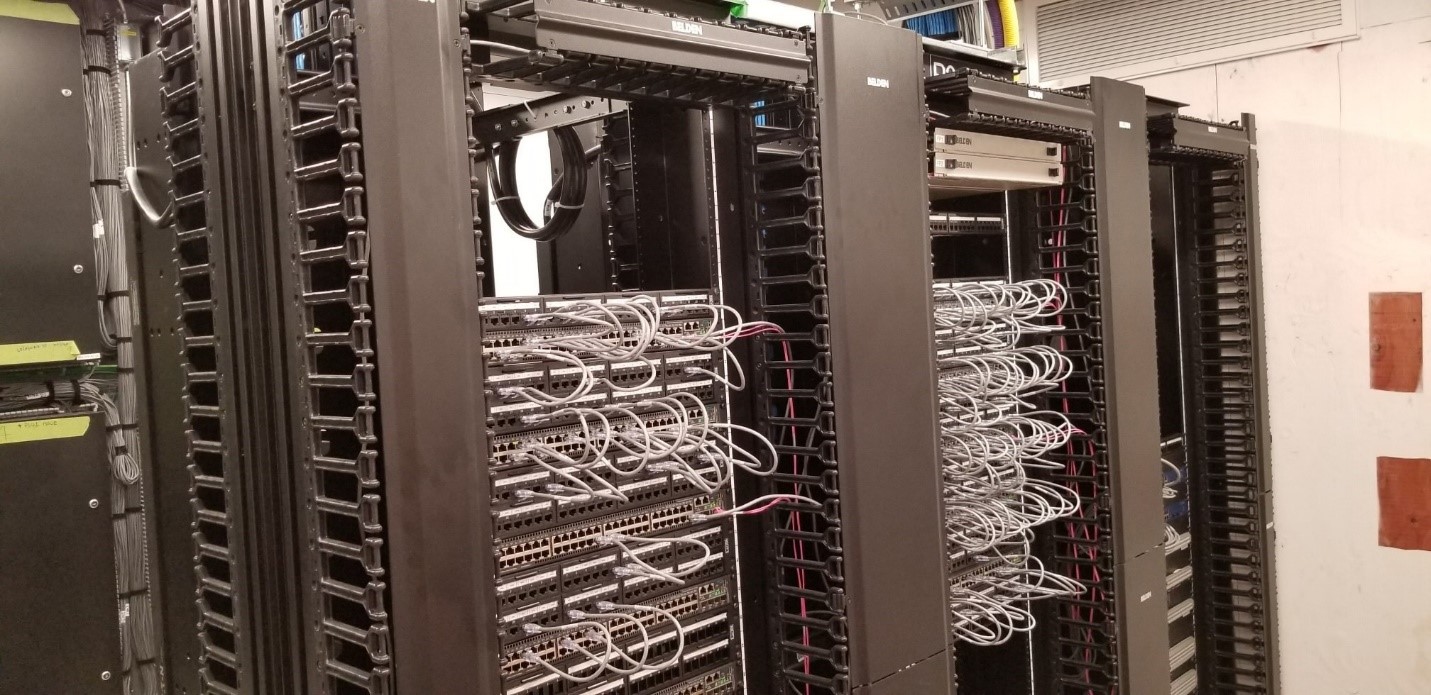Today, we are surrounded by technology—even in health care. But have you ever wondered what behind-the-scenes technology goes into supporting critical clinical and business operations?
“IT is not typically the first thing that comes to mind when you think of health care, but is so important to the overall functioning of the health care system,” says Blair Stickland, the Information Management/Information Technology Services (IMITS) lead for the Red Fish Healing Centre for Mental Health and Addiction.
The Red Fish Healing Centre, opening later in 2021, will showcase the power of technology for people with the most complex mental health and substance use challenges in B.C. The entire centre will be virtually enabled, paving the way for built-in videoconferencing tools to help clients, loved ones and care providers around the province. It will also be equipped with electronic client records and medication dispensing systems that help provide seamless patient care; a security system to ensure clients, staff and physicians stay safe; full Wi-Fi connectivity, and an interconnected network of around 300 computers that will allow health care providers to perform tasks with efficiency and ease.
"Thanks to the IMITS team, we are able to build facilities like the Red Fish Healing Centre, which incorporate the newest, most leading-edge technologies into mental health and addictions treatment."
IMITS is the team responsible for implementing these technologies at the Red Fish Healing Centre. Their behind-the-scenes work at the facility is helping to change the status quo for mental health and additions treatment, which is increasingly taking advantage of digital technologies such as these.
“If you don’t get the supporting infrastructure and devices right, clinical services suffer,” says Blair. “Staff need access to technology to carry out their tasks in a timely manner in a way that makes the patient experience seamless and never interrupts care. Thanks to the IMITS team, we are able to build facilities like the Red Fish Healing Centre, which incorporate the newest, most leading-edge technologies into mental health and addictions treatment.”
The journey to transforming the Red Fish Healing Centre into a modern mental health and substance use treatment facility hasn’t been easy.
The new centre is located on səmiq̓ʷəʔelə, meaning the Place of the Great Blue Heron. It’s also known as the Riverview Lands in Coquitlam. The old Riverview Hospital, located next door, opened in 1913—so the technical groundwork at the site has not always been maintained to modern standards, to say the least.

“When the Riverview Lands served as a mental health site over 100 years ago, the area was considered more remote than it is now, and aspects of the network did not exist,” Blair explains. “Now that we are transforming the site, there is an immense amount of work that needs to be done underground to ensure the foundations are up-to-date.”
When it comes to the wide-area network—that is, the way a site is connected to the outside world—there must be information pathways to transmit data. Two of these types of pathways include fibre optic cabling, a newer digital technology, as well as copper cables, an older analog technology. Given the diverse deployment of technology at the site and the need to ensure the site maximizes its resilience to failure, the IMITS team needed to install both. By creating multiple diverse information pathways, there should never be one point of failure. This prevents the system from collapsing, which is crucial in a health care facility.
As the IMITS team soon discovered, however, the age and history of the lands would present numerous challenges. The conduit, which is the protective casing that fibre optic cables run through to avoid being damaged, had been crushed—likely due to age—meaning that the fibre optic cables housed inside would also need to be replaced. In addition to replacing the conduit and fibre optic cables, they also needed to source the proper copper cables for installation. With the help of Telus, copper cables were sourced for the project and the team got to work laying 1.8 kilometers of cable down Lougheed Highway in order to establish one leg of the network for the Red Fish Healing Centre.
Once the network had been established, there would need to be a dedicated space in the building to handle this new flow of information. For the Red Fish Healing Centre, the IMITS team designed nine separate rooms, known as IMIT communication rooms, where a system of large, highly complex computers and network control switches are housed to store and manage the facility’s processing power, data storage, and networking capabilities.
 Racks of network switches and equipment in one of nine data centres designed and built by the IMITS team to support the Red Fish Healing Centre.
Racks of network switches and equipment in one of nine data centres designed and built by the IMITS team to support the Red Fish Healing Centre.
In addition to establishing a new modern network and creating data communication rooms, the team has also been working on improving the cell service on the site for patients and staff who will be living and working in the building. Weak cell service is a common issue in hospital sites, often due to the materials used in the construction of these buildings, which prevent signals from outdoor cellular towers from reaching all areas within the site. In order to improve the signal and prevent important calls from being dropped at the Red Fish Healing Centre, the IMITS team sourced a distributed antennae system, or DAS. The DAS is a network of antennas connected to a common source to be distributed throughout the building, which will ensure a strong cell signal across the whole site in time for opening.
Transforming the Riverview Lands to welcome the Red Fish Healing Centre has required a great deal of consultation and teamwork. Just as clinical work relies on functioning IT systems for smooth health care delivery, creating a large-scale IT system such as this also relies on the input of clinicians and other teams to create a cohesive vision.
“Part of the challenge with this project, and a key feature in the technology design overseen by the IMITS team, has been anticipating what technology will be required — not just now, but also in 10 or 20 years. We have learned a lot from facilitated conversations with clinicians and staff who work in all aspects of health care delivery to ensure we have everyone’s needs in mind,” says Blair.
“Work on the Red Fish Healing Centre is a true team effort,” says Rebecca Hahn, executive director of corporate and clinical support services at BC Mental Health and Substance Use Services. “The individuals on the IMITS team are true experts in their field, and thanks to their work behind the scenes, the Red Fish Healing Centre will be able to change lives for those living with mental health and substance use disorders.”
